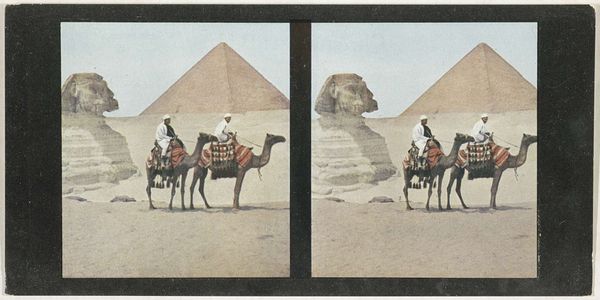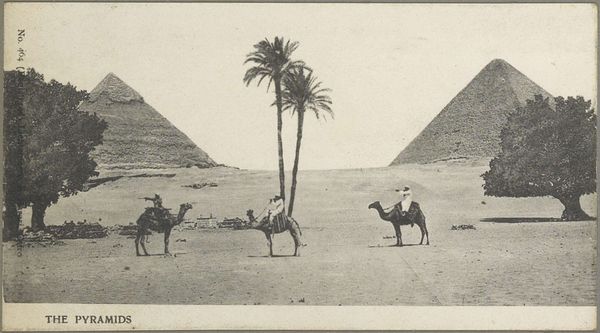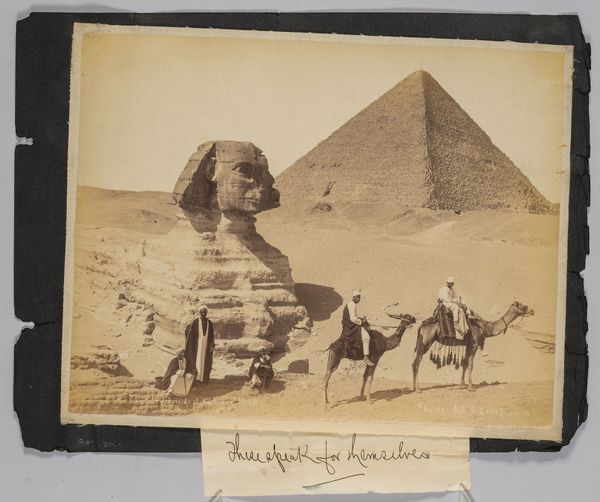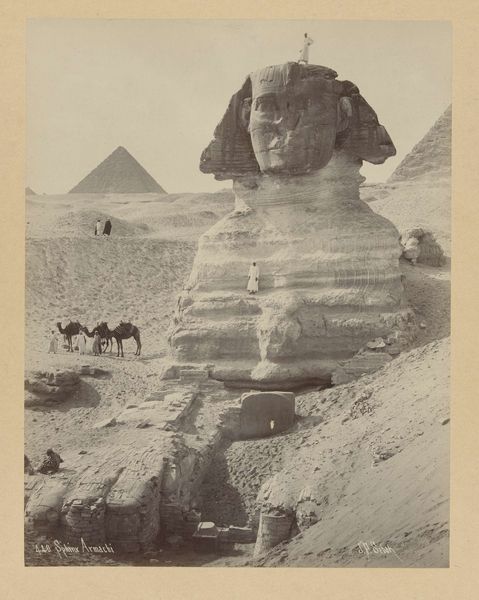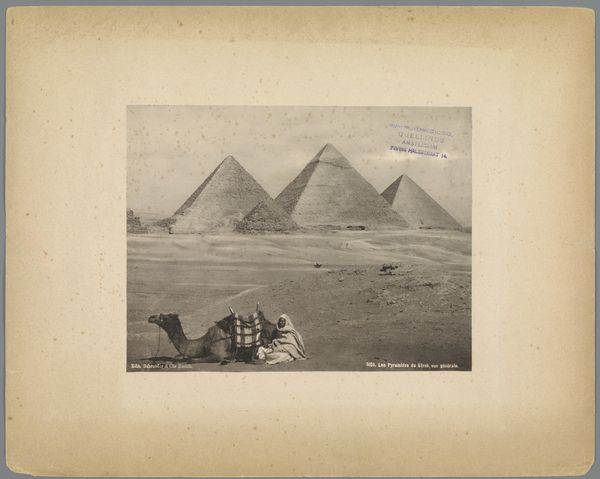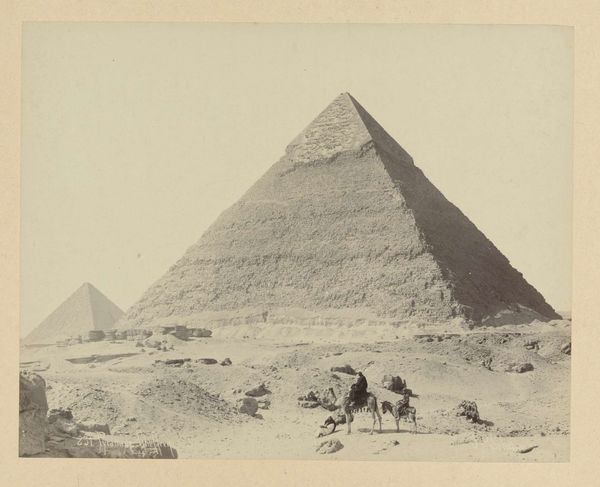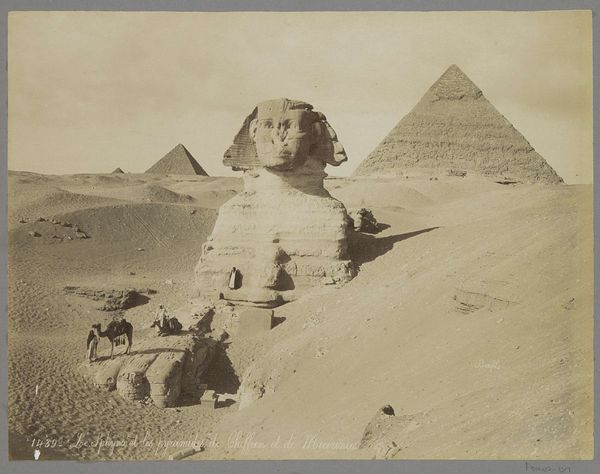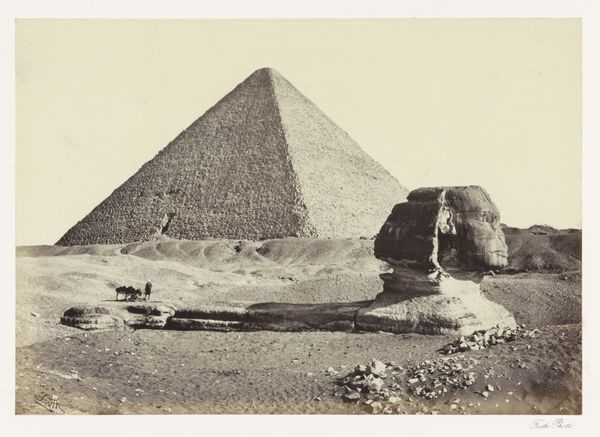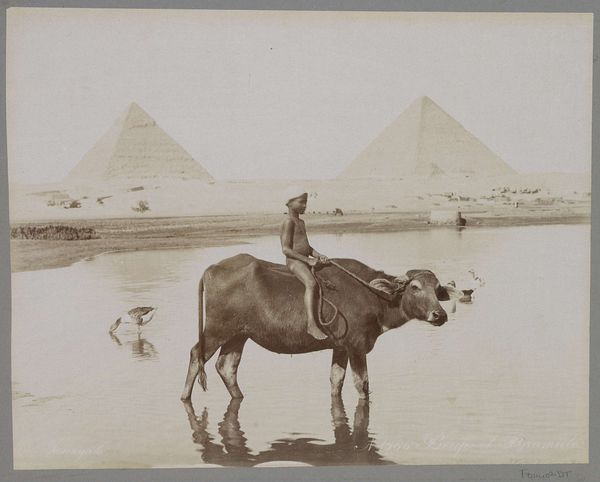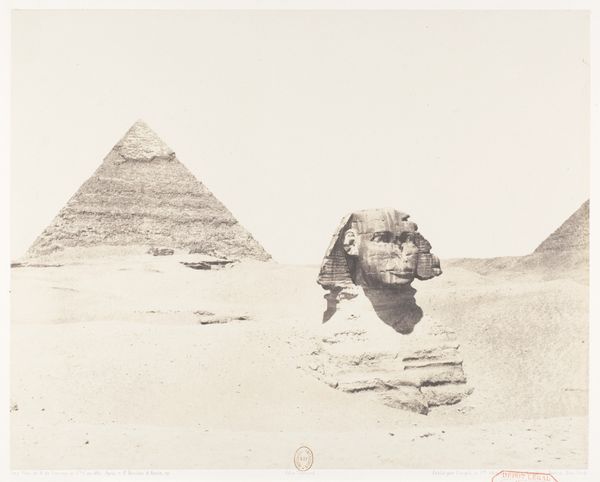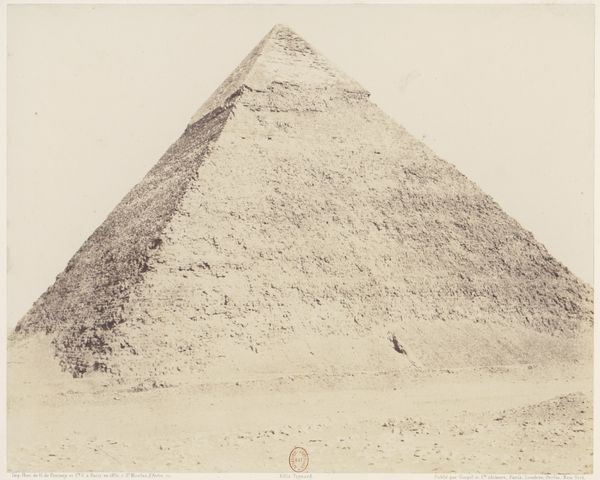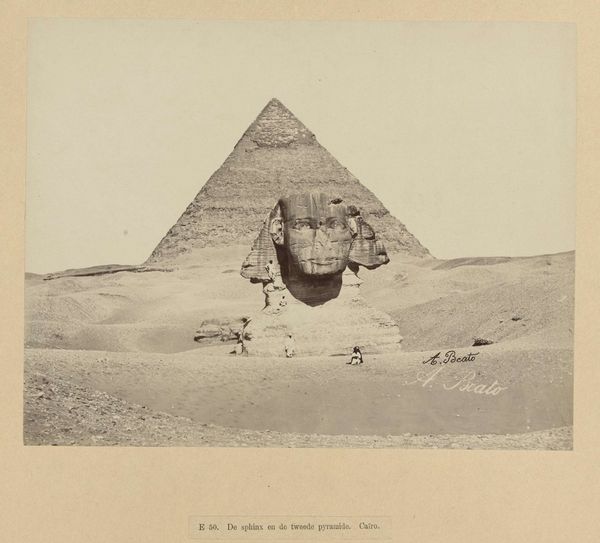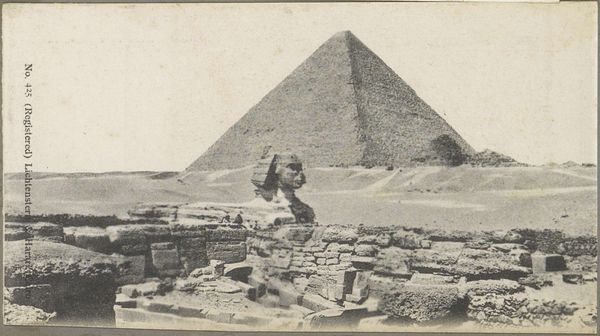
Groep mannen met dromedarissen en ezel bij de Piramide van Cheops en de Sfinx van Gizeh 1911 - 1919
0:00
0:00
c-print, photography
#
landscape
#
c-print
#
photography
#
ancient-mediterranean
#
orientalism
Dimensions: height 90 mm, width 180 mm
Copyright: Rijks Museum: Open Domain
Editor: Here we have an early color photograph, "Group of Men with Camels and a Donkey near the Pyramid of Cheops and the Sphinx of Giza," dating from around 1911 to 1919. It's so striking – almost theatrical. The stark pyramid and Sphinx loom behind this little tableau of men and animals. What do you make of it, focusing on the formal qualities? Curator: The image is structured by contrasting scales and textures. The colossal, geometric regularity of the pyramids and Sphinx anchors the background. In contrast, the foreground is populated by human figures and animals, introducing varied, organic forms. The color, too, operates on contrasting registers: the muted tans and browns of the desert earth versus the crisp whites of the men's clothing. Do you observe how this affects the visual balance? Editor: Yes, it’s as though the pyramid and Sphinx create this massive, silent backdrop for a scene that’s really about the people and animals in the present. It seems to highlight both the immutability of these structures and the transience of life. Curator: Precisely. Furthermore, consider how the photographer utilizes light. Notice how it rakes across the surfaces, accentuating the texture of the pyramid stones and casting distinct shadows that define the contours of the figures. This enhances the overall three-dimensionality and clarity of the composition, wouldn’t you agree? Editor: I do. It makes the subjects almost jump out of the frame. This photograph really highlights how form and composition can speak volumes, even beyond the historical context. Thanks, this has been a fantastic insight. Curator: Indeed. Examining such an image, absent any direct knowledge of the scene, underscores how the visual language itself can provide a wealth of information and elicit a spectrum of interpretive possibilities.
Comments
No comments
Be the first to comment and join the conversation on the ultimate creative platform.
